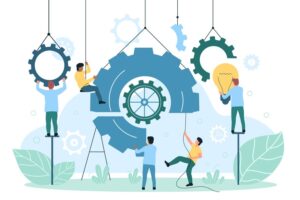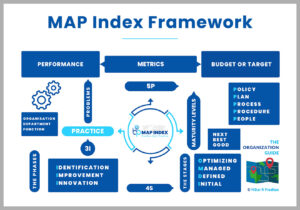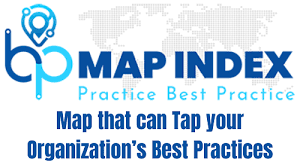To achieve goals you’ve never achieved before, you need to start doing things you’ve never done before — Stephen Covey
The concept of best practices is not conceptually understood. Hence, we have the perennial dilemma of whether to use the phrase best practices or better to use by rephrasing it as better practice. We get entangled in the mechanics of semantics. There is this constant deliberation whether we should consider the word better or best when we are qualifying a practice. Popularly, “best practices” get used as against the term “better practices”, perhaps there is an inherent predisposition attached to the coveted word best.
There are strong arguments against the choice of words for practices, and there are stronger verdict against the specific usage of term best practices. Striving for better creates the space for continuous improvement as against staying put on the grand notion of being the best. Nothing stays best forever. Reaching the best means we have reached our full potential and there is nothing else to achieve. Being driven by best we get somewhat fixated. We seize to seeing things differently and doing different things. As a consequence, we stop abruptly doing things and put a cap to the process of continuous improvement and not tap into bigger radical innovation.
Practices cannot remain the best forever and nor can there be anything not better than best practices. These are notions. These are ideas. These are concepts. All these things are subjected to change and changes are such an integral part of business organizations. The best practice itself goes through a process of change. It is the change through self-discovery and a process of constant innovation. The practice of best practice is a long journey and we have to keep travelling as the destination of business goals keeps changing.
Given the fast-paced business environment, the changes are not just rapid but are radical in nature. The business goals are set in the backdrop of such business conditions and market environment that the organization operates. The operating word for managing best practices in organization is change, change is for the better.
There are practices within the organization that grow to become the best practices. There are best practices from the industry that organizations fetch and make their own. Growing best practices or getting best practices is not the end in itself. This is perhaps the beginning and mostly used as a template to set the broader agenda for creating a fertile culture of cultivating best practices within the organization.
The essential question is what we do after we have the established best practices put in place and it is producing the desired results.
Is this the end point of our travel or the final destination we decided to reach? We have reached…
If yes, the chapter closes and we are left with no further discussions. On the contrary, the very idea of practicing best practices is to build efficiency and promote productivity, and work on every such aspect of the organization processes and with people involved to achieving business excellence. Somehow, there is a flawed perception and faulty set of assumptions on which these assertions are largely based, and normally don’t get rightfully questioned.
The primary problem with the interpretation of best practices is that it gets overly generalized and stretched out of context.
Since there is no such formal definition to best practices, it is left to wild interpretation which then gets informally misused. Even it is stated that best practices are not just sustainable by nature but otherwise prove counterproductive when not put to proper practice.
Why best practices? As the mindset of being the best has the intrinsic tendency to make us feel somewhat contented and it sets in a sense of complacency. It is assumed that many organizations rely on established best practices and expect it to keep giving them the same best results. Things don’t happen that way as the context changes but we get stuck to it.
Organization has its inherent inertia and people have their own resistance to change. Without change nothing new comes up. Change is the real harbinger of innovation in an organization. There are changes which come on their own and we may not have any say or control but there are changes which we can affect. We should focus our work on this type of change on which we have a much better say and control.
One thing remain indisputable is that what is best today may not remain the best tomorrow. In such a rapidly changing business environment and with such high uncertainties, best practices have shorter lifespan and we need to be better aware of such vagaries of environment and business variables at play. In order to keep it the best we need to keep working on the best itself by the process of iteration and innovation.
Hence, when we are referring to best practices we are usually talking in a context and we are aware of its susceptibility. By keeping the practice away from the context, we are literally putting it out of context. By not attaching the sense of vulnerability to a practice we are becoming too idealistic.
Best practices are not the destination but rather the means to setting and resetting new destinations to be conquered. We all make a fundamental mistake when we place the best practices as the ultimate destination for business organizations to reach. These are important perspectives and we need to harness such multiplicity of perspectives which needs right set of mindset.
Best practices are a means to building a learning organization.
- A learning organization is where we foster an open culture.
- A learning organization is where we encourage experimentation.
- A learning organization is where we do continuous improvement.
It is as much about setting the business goals and so much more about resetting the organization’s mindset. It is so much about building cross-functional teams and establishing external collaborations. The cross-fertilization of ideas is the basic bedrock for building and sustaining the framework of best practices. Reaching best practices and achieving best possible business results is not the end in itself but it is only to open up newer avenues and to set in better opportunities to explore.
This is where we can make the best practices better and what we should term something better than best, it is apt to term it as next practices. The practices that have further evolved and resetting the existing benchmark set. Once we understand the fundamental philosophy behind setting on the voyage of embarking on an overarching expedition of best practices.
- The journey of best practices is a means to achieve better than the best and do more with less.
- The journey of best practices is a template to set the transformation process to get the best business results.
The fundamental idea of working on best practices is not to get the best and then rest but it is to reset the start button, and start a fresh new journey for the constant quest for business excellence. The difference between the better, the best and the next is not just semantic in nature but it is so much more fundamental in perspective. One need to understand this nuanced perspective to appreciate what it means to be better than the best in business. It has a much larger connotation and bigger impact on the organization’s overall outcomes when properly applied and practiced in the rightful earnest…












